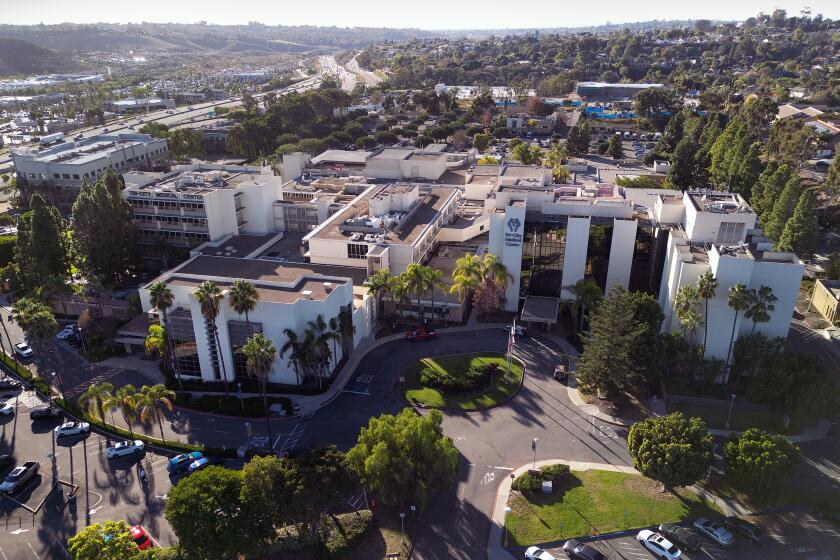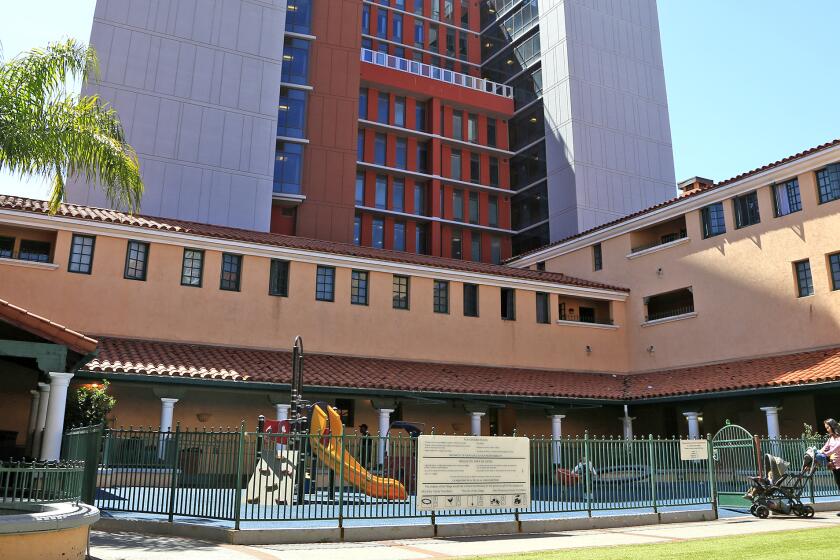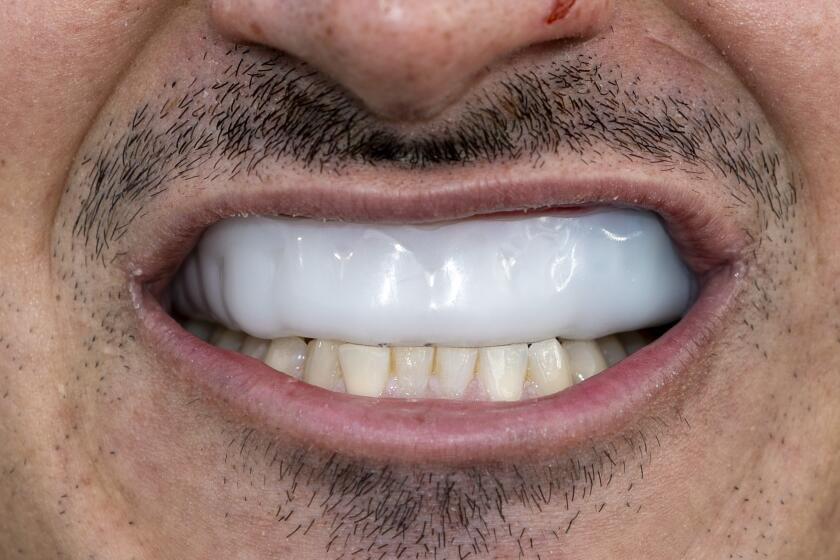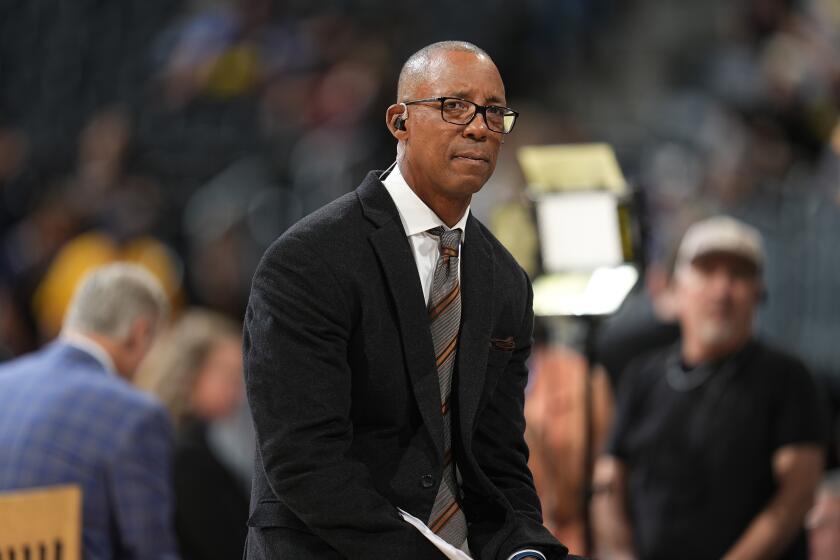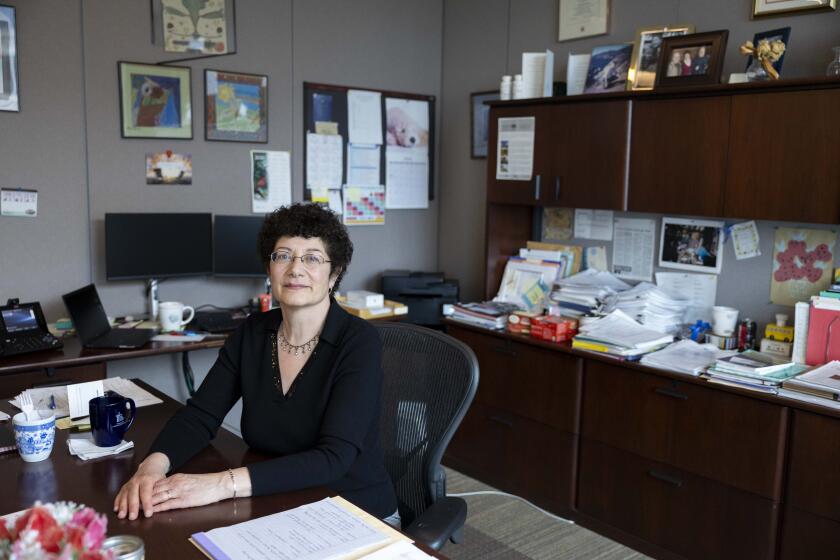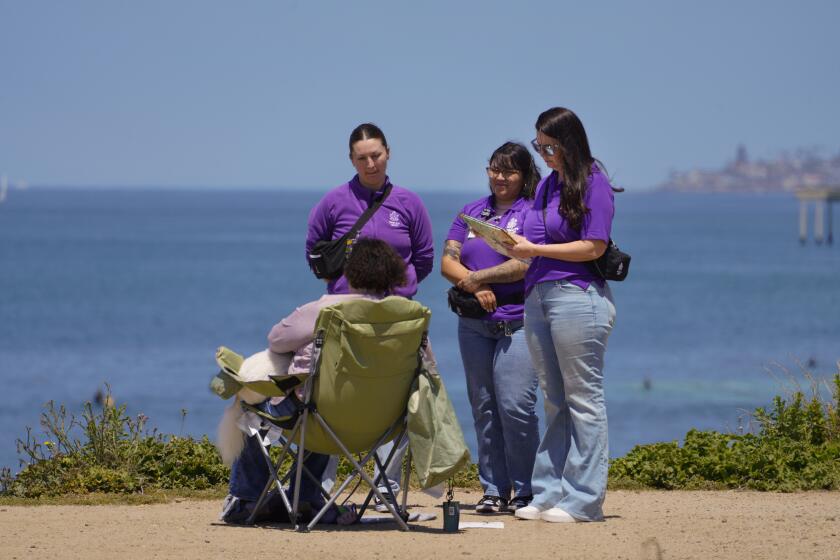Which hospitals will still require masks? With new guidance starting today, the policies vary

Though masks came down in public places and K-12 schools more than one year ago, they have still been required in health care settings, from doctors’ offices and hospitals to skilled nursing and senior care facilities.
That changes Monday, as new masking guidance from the California Department of Public Health takes effect. Hospitals, nursing homes and detention facilities — all of which fall into the state’s “high risk” category — will be free to stop requiring masks in most routine situations. While the public health departments in San Francisco and Los Angeles counties have mandated that masking continue in their local hospitals, San Diego County has thus far made no similar local requirement.
Dr. Wilma Wooten, San Diego County’s public health officer, said Saturday that her office will soon publish a “strong recommendation” for continued masking in health care facilities, but she will not issue a local mandate as her counterparts in San Francisco and Los Angeles have.
“Last year our board of supervisors voted that they would be aligned with guidance from the state so, as such, we are not issuing a health officer’s order, but we are strongly recommending that health care workers be masked in health care settings,” Wooten said.
Federal recommendations generally link masking to the amount of coronavirus circulating in individual communities. Here, Wooten said the current trend looks good with local COVID-19 hospitalizations and intensive care admissions falling in recent weeks.
“Based on the trends, it is expected that these numbers will continue to decrease,” Wooten said. “All of those factors have gone into the ultimate decision.
But a survey of local health systems indicates masks will remain a significant part of the health care experience across the region, exposing patients and employees to widely varying requirements.
Scripps Health and Sharp HealthCare, the two local systems that served the largest numbers of hospitalized COVID-19 patients during the pandemic, worked together to craft new masking strategies.
Both will continue masking for all any time a patient’s caregivers are within 6 feet of each other. Masks will be recommended but not required in non-clinical areas and will still be required in patient rooms, whether an exam room or hospital suite.
Kaiser Permanente, Rady Children’s Hospital and Palomar Health in North County all indicated this week that they’re supporting the basic CDPH guidance that masks are no longer required for patients or employees. But anyone is free to wear a mask if they wish, and all of those institutions will still require masking if a patient has an infectious disease subject to isolation protocols.
Face coverings will also be required during certain health procedures, such as insertion of a breathing tube in a patient’s airway, that are more likely to cause coughing and other reactions that can spread infectious disease.
Patients with respiratory symptoms such as coughing or sneezing are generally expected to wear a mask when entering any health care facility. Those who arrive without a mask will be given one and asked to wear it.
Facilities will keep making free masks available to patients who request them.
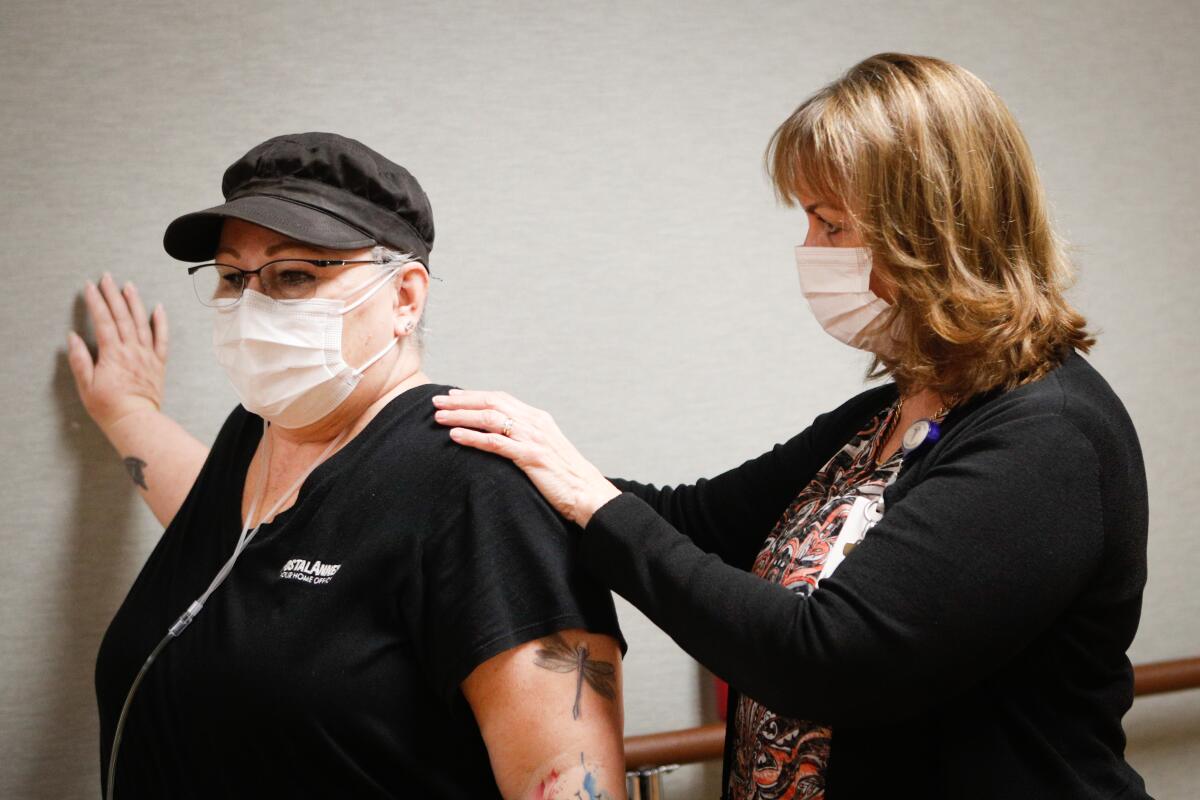
Deciding just how far to go along the continuum of mask-wearing came down to discussions among the staffs at individual providers.
Dr. Ghazala Sharieff, chief medical officer of acute care operations and clinical excellence at Scripps, said the concern was moving too quickly, especially given that rising numbers of respiratory infections among health care workers can quickly grind the entire system to a halt, as occurred when the Omicron variant spread rapidly in early 2022.
Still, there is also a mask fatigue among health care workers that cannot be ignored, she said. That meant unmasking at nurses’ stations and break rooms and in other non-clinical settings felt like the right compromise.
“We do want to see each other — it has been three long years, and I do think everybody wants to get back to some sense of normalcy,” Sharieff said. “If we can rebuild our camaraderie in our own staff, I think that will extrapolate out to the patients as well.”
Dr. Nick Holmes, chief operating officer at Rady Children’s, said that communication with patients is a major reason why the region’s only children’s hospital is allowing more leeway with masking than it has in years.
“When you have a mask on, trying to communicate to a family member or to a patient — that shouldn’t be the sole reason why you should or shouldn’t wear a mask, but we do need to look at everything in totality,” Holmes said.
He added that Rady is making sure its staff knows that they should respect requests to mask up if patients are more comfortable that way.
“We will certainly oblige, because we want to make sure that we have masks available so people feel the safest that they possibly can,” Holmes said.
As of Friday afternoon, some still had not specified exactly how they plan to handle the change in masking requirements.
UC San Diego Health and Tri-City Medical Center in Oceanside say they plan to post their new policy Monday. Prime Healthcare, which runs Alvarado and Paradise Valley hospitals in La Mesa and National City, said it was not quite ready to share masking plans this week.
Corrections facilities and homeless and emergency shelters already had additional leeway to reduce masking in non-clinical areas if transmission is low and outbreaks are not occurring.
There is a possible side effect to the end of masking mandates in clinical settings: Medical research suggests that reducing masking in hospitals may cause the number of non-COVID respiratory infections among admitted patients to rise.
Research comparing pre-pandemic infection rates to those during the pandemic, when masking and other infection-control measures were in place, showed a significant drop.
One study of a large hospital in Singapore, for example, saw its rates of respiratory viral infection fall from 9.69 cases per 10,000 patient days to only 0.83 per 10,000 between February and August 2020. A patient day is exactly what it sounds like — a single patient in a hospital for a single day. A patient admitted for a week, then, would log seven patient days.
Get Essential San Diego, weekday mornings
Get top headlines from the Union-Tribune in your inbox weekday mornings, including top news, local, sports, business, entertainment and opinion.
You may occasionally receive promotional content from the San Diego Union-Tribune.



